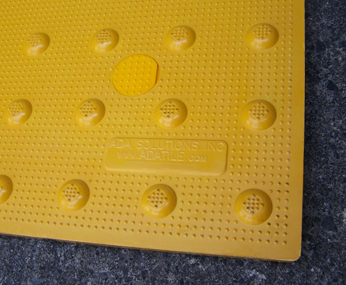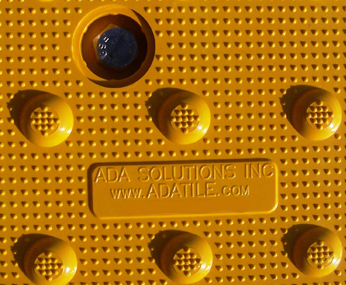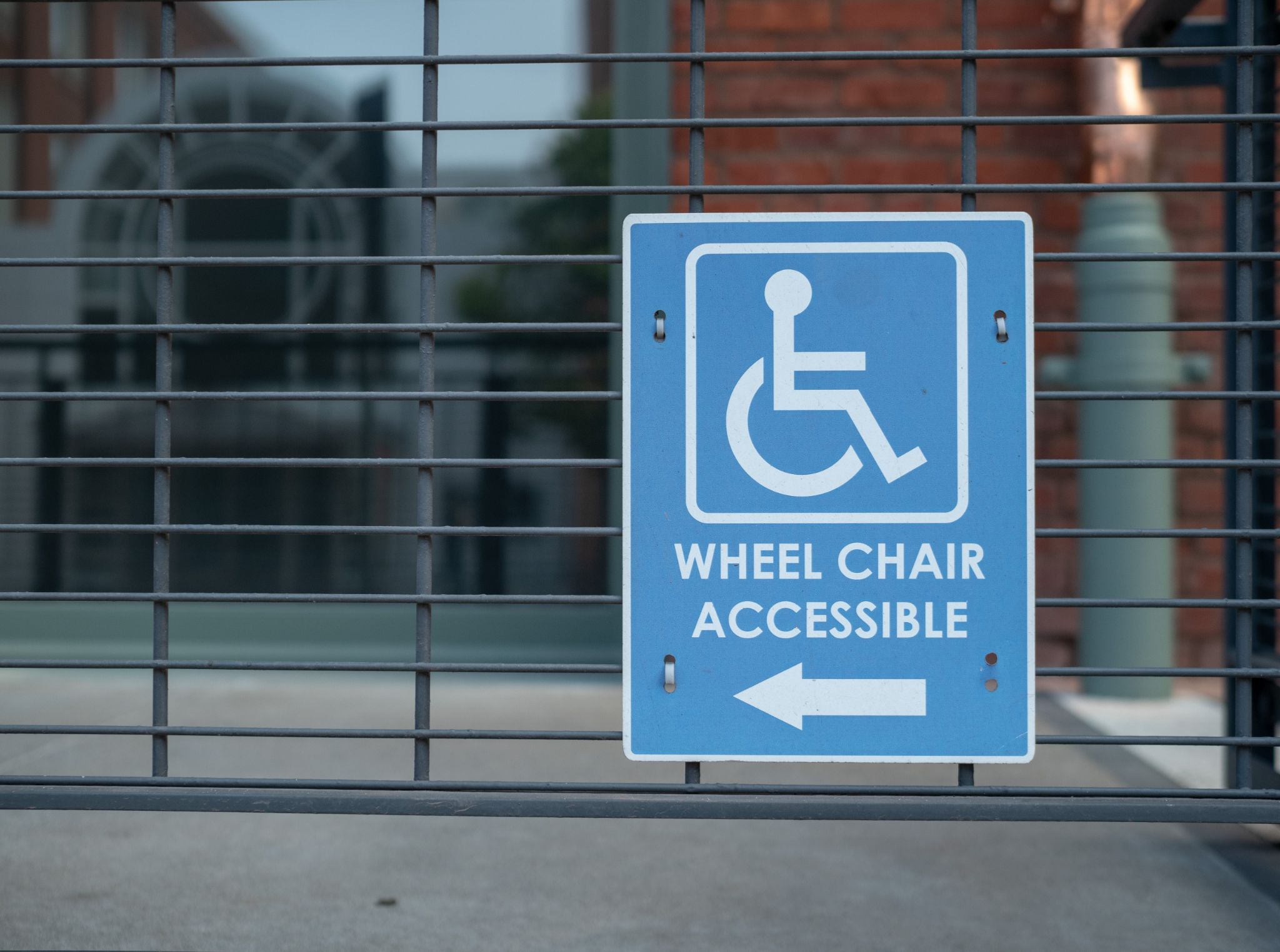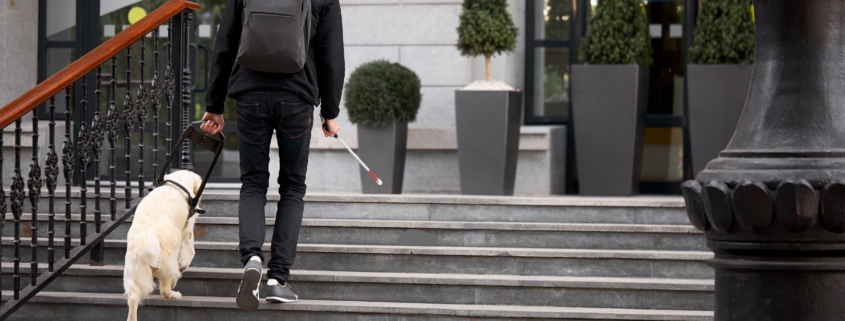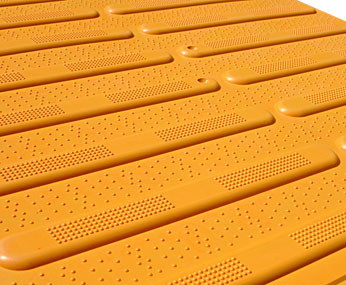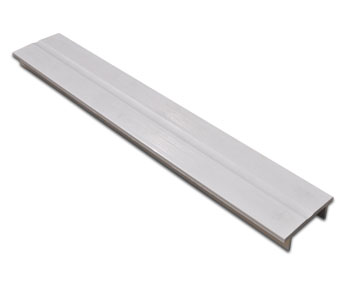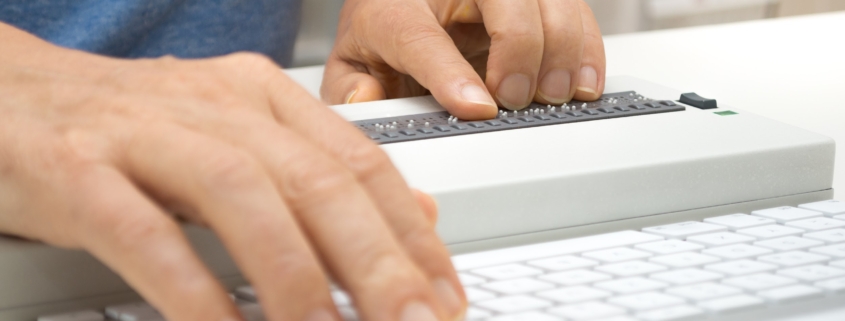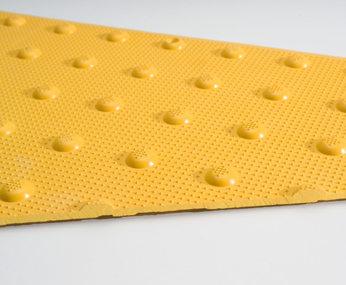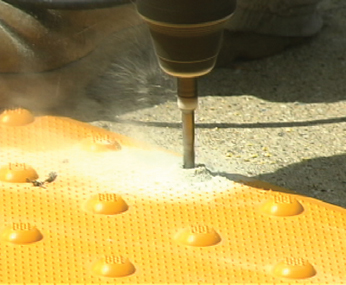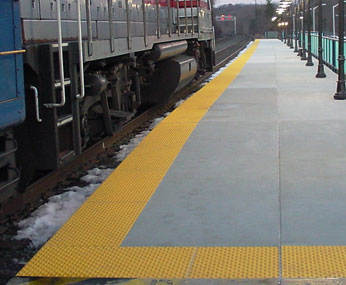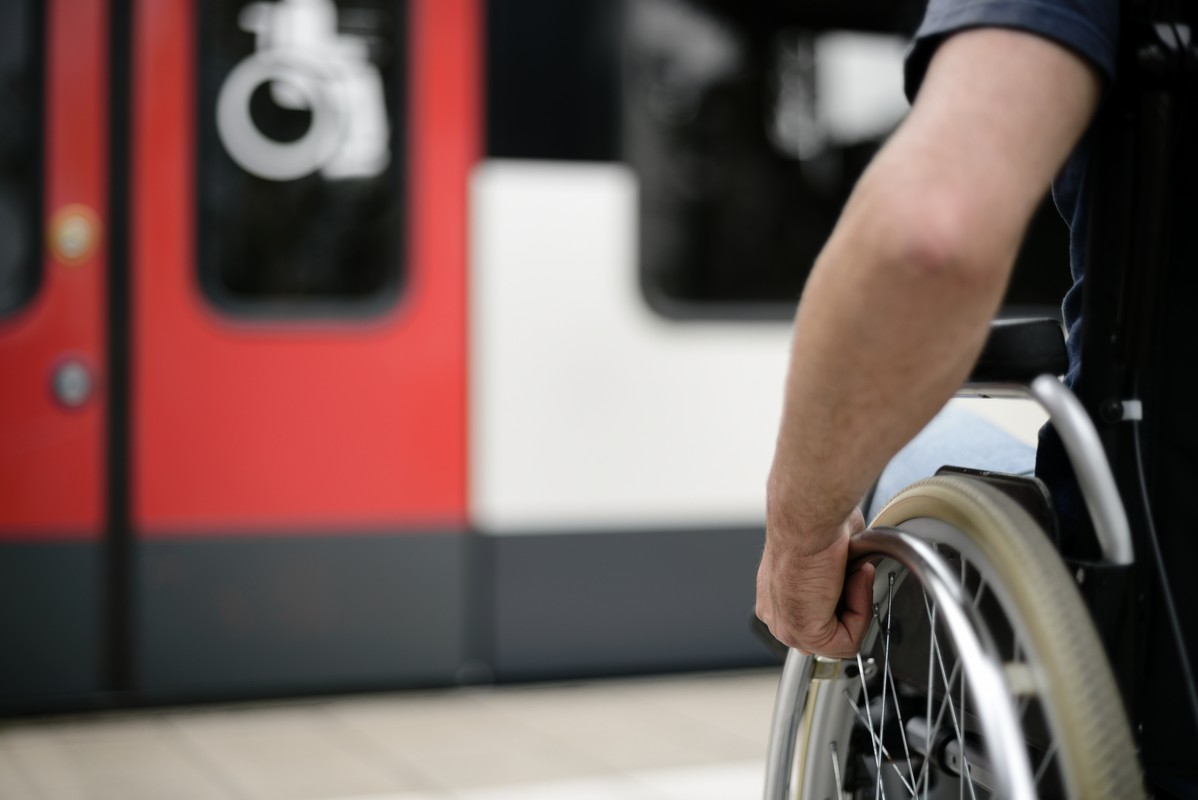The Americans with Disabilities Act (ADA) was signed into law in 1990 to expand opportunities for individuals with disabilities, prevent discrimination, and improve safety. In addition, it set requirements for detectable warning systems. The criteria for these was revised with the ADA 2010 Standards for Accessible Design. To be compliant, you must factor in the latest guidelines; here are key points to think about when choosing detectable warning products.
- Color
Warning surfaces tend to be yellow, red, or other bright colors. However, the ADA does not require a warning tile to be a specific color, although state and local laws vary in what colors they permit or restrict. ADA guidelines do require the warning surface to contrast with the color of surrounding surfaces. If the sidewalk, street, or platform it is installed on is dark, the tile should be light; if the surrounding surface is light, the warning surface should be darker.
- Spacing
The ADA specifies precise spacing between truncated domes, based on studies of what works best for tactile feedback when using a wheelchair, walker, cane, or other mobility aid. From center to center, raised domes must be 1.6 to 2.4 inches apart. There must be at least 0.65 inches of space between each adjacent dome.
- Size
The base diameter of truncated domes must now be between 0.9 and 1.4 inches, with a height of 0.2 inches above the surrounding panel surface. Domes are arranged in a grid to provide a distinct feel when an individual’s feet or mobility aid contacts them. The warning surface itself must be at least 24 inches long and extend in the direction of travel. It must reach across the entire width of the surface it’s installed on. Detectable warning systems can be square, rectangular, or radial.
- Location
Since 2010, the ADA requires detectable warning surfaces only on curb ramps and transit platforms. They had previously been required in front of doors near hazardous locations, the edges of reflecting pools, and any area where vehicles travel that could be dangerous. A warning surface should be installed on any public right-of-way that transitions to an area that is hazardous. Therefore, transit platform edges, curb ramps, and crosswalks are among the most common places to find tactile warning surfaces.
- Curb Cuts
A curb cut must be at least three feet wide and a minimum of two feet from where the pedestrian path transitions into a street or other vehicular way. A 24-inch warning strip must be installed across the bottom of a curb ramp. The slope of a ramp must not exceed 8.33 percent. That means there must be at least 12 inches of distance for every inch of height change.
- Product Quality
For warning tiles and other products, the American Society for Testing & Materials (ASTM) provides data on strength and other properties. Make sure a detectable warning tile meets ASTM standards before choosing it. That way, you can verify it is reliable and safe.
- Function
Detectable warning surfaces must do more than provide tactile feedback. They need to be slip-resistant, as rain, snow, ice, oils, and other substances can create dangerous conditions for pedestrians. Tiles must also have low water absorption to extend their life. Water expands and contracts, depending on temperature, so water entry can damage the material, make the tile less effective, or put people in danger.
- Installation
The installation procedure depends on the type of product. For cast-in-place tiles, holes in the flanges of the panel help anchor it; concrete can flow through before it cures, effectively sealing the product. Surface-mounted detectable warning systems include fasteners and adhesives to secure them. The perimeter should be properly sealed during installation, using a high-quality sealant.
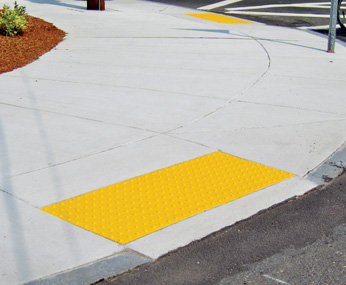
Order Detectable Warning Systems from ADA Solutions
The leading supplier of ADA-compliant detectable surfaces in North America, we provide quality products including cast-in-place pavers and replaceable as well as surface-applied tiles. We also supply radius systems, cast iron ADA plates, photoluminescent domes, and replaceable graphic tile systems. Various tactile surfaces are available for transit platforms as well. To learn more or get a free quote, call us at 800-372-0519.

